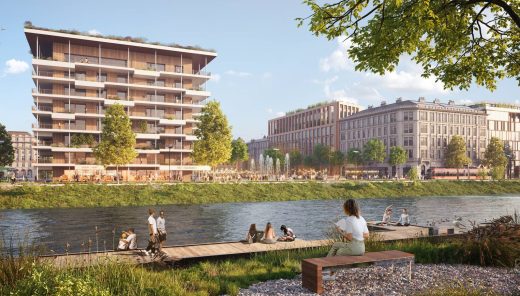How to turn buildings from material consumers to material banks
European construction is estimated to generate 400 million tons of waste annually. By using digital models, in combination with circularity, 3,600 tons of carbon emissions, or EUR 11.5 million, can be reduced – in a single building.
In Sweden, a warehouse in central Stockholm was upcycled to become the trendy Blique hotel. By using a digital model, it was possible to make decisions regarding what parts of the building to reuse or upcycle. In total, 3,600 tons of carbon emissions were saved, compared to if the hotel would have been built from scratch. The total avoided costs of waste management, new materials and impacts to society from carbon emissions amount to EUR 11.5 million (equivalent to EUR 750 per sqm).
“If we had an overview of buildings and their available material assets across all of Europe, we could match renovation and demolition better with construction, secure availability of materials and save a huge amount of carbon emissions and money through increased reuse of building materials. We have to meet net-zero carbon goals and move from wasteful to resourceful. The way to do that is through applying circular methods to everything that we do,” says Elise Grosse, head of sustainability for Sweco’s architects in Sweden.
The key to this is data. In order to find the resources and value in existing buildings, you need to delve into the data. This can then be turned into intelligence and informed decision-making, regardless of whether you are a developer, an investor, a designer, a planner, a municipality, or are involved in any other way in developing buildings.
The built environment accounts for roughly 40 per cent of global emissions. With climate change, new regulations and increasing costs for new material, continuing as before is not an option. The new Urban Insight report, “Building the future through circular data”, provides a snapshot of best-practice and next-practice tools to collect the intelligence needed to transform buildings from material consumers to material banks.
It is the first in a series of Urban Insight reports from Sweco on the topic Towards Circularity, in which experts highlight specific ideas, solutions and scientific findings needed to plan and design safe and resilient future urban environments.
Attached information
Anna Elisabeth Olsson
Head of Press and Public Affairs


